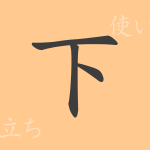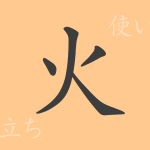“
The Japanese language has numerous kanji, each with its own unique meaning and charm. The common kanji “”化”” (Ka) is one of the characters frequently used in the lives of Japanese people and is deeply rooted in our language and culture. In this article, we will delve into the full picture of “”化”” (Ka), from its etymology to its meaning, usage, and even idioms and phrases. This content will provide readers with a deeper understanding of the kanji “”化”” (Ka).
The Origin (Etymology) of 化 (Ka)
The origin of the kanji “”化”” (Ka) is ancient, starting from its meaning of change or transformation. Derived from ancient Chinese pictographs, this character represents the appearance of a person changing by their own will. Its shape, in its early form, depicted the process of a person changing, and it has evolved into its current form over time.
The Meaning and Usage of 化 (Ka)
The kanji “”化”” (Ka) carries meanings such as change, conversion, and transformation, indicating that something is changing into a different state or form. This kanji is used to represent a wide range of changes, including natural phenomena and social fluctuations. It can also add a sense of evolution or development when used in compound words such as “”文化”” (Bunka, culture) and “”化学”” (Kagaku, chemistry).
Reading, Stroke Count, and Radical of 化 ( Ka)
The kanji “”化”” (Ka) is a character with a simple yet profound meaning.
- Reading: The on’yomi reading is “”か”” (Ka), and the kun’yomi readings are “”ばける”” (Bakeru) and “”ける”” (Keru).
- Stroke Count: A total of 4 strokes
- Radical: 人偏 (Ninben)
Idioms, Phrases, and Proverbs Using 化 (Ka) and Their Meanings
Idioms, phrases, and proverbs containing “”化”” (Ka) are extremely abundant in the Japanese language. For example, “”化粧”” (Keshō) refers to the act of beautifying one’s appearance, “”変化”” (Henka) means a change in the state of things, and “”文化”” (Bunka) refers to the values and styles created by human activities. All of these symbolize the changing nature of things through the character “”化”” (Ka) in some form.
Summary of 化 ( Ka)
The kanji “”化”” (Ka) occupies an important position in the Japanese language due to its high frequency of use and depth of meaning. This character, which represents change, is an indispensable presence in expressing evolution and transformation not only in the natural world but also in human society and culture. We hope that through this article, readers have gained a deeper understanding of the multifaceted charm of “”化”” (Ka).
“

























